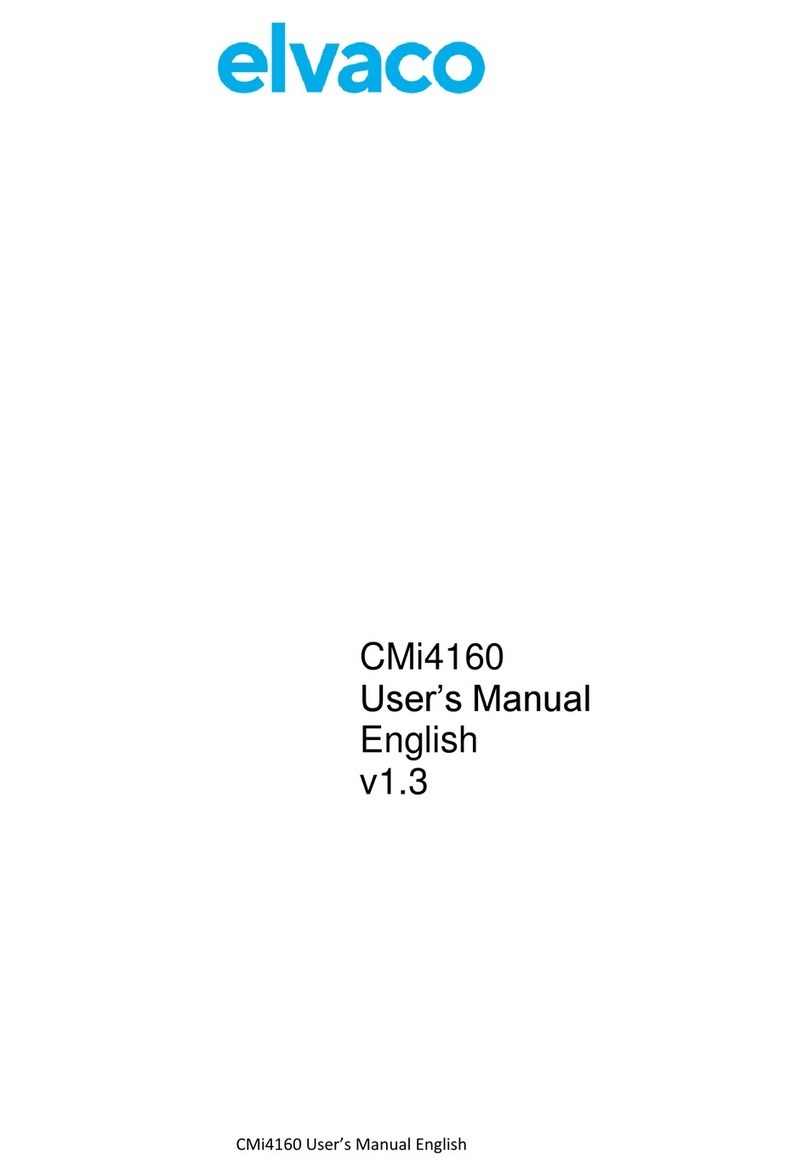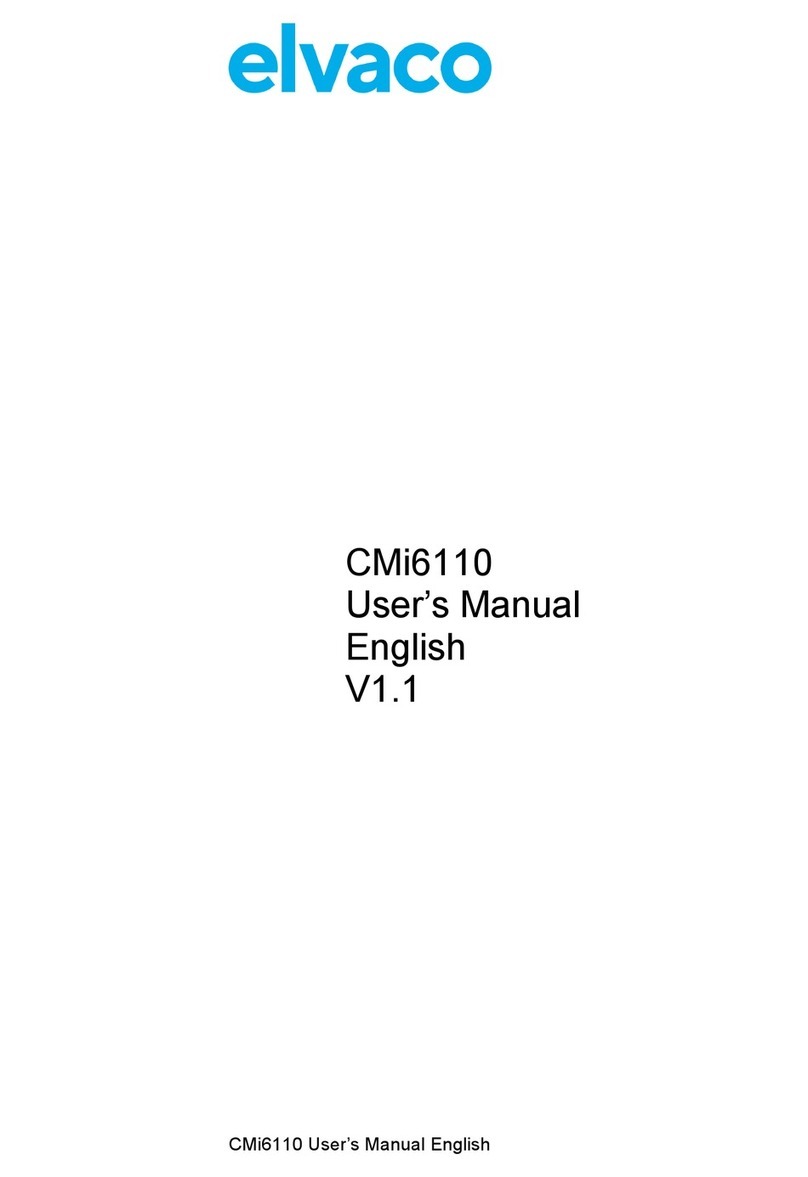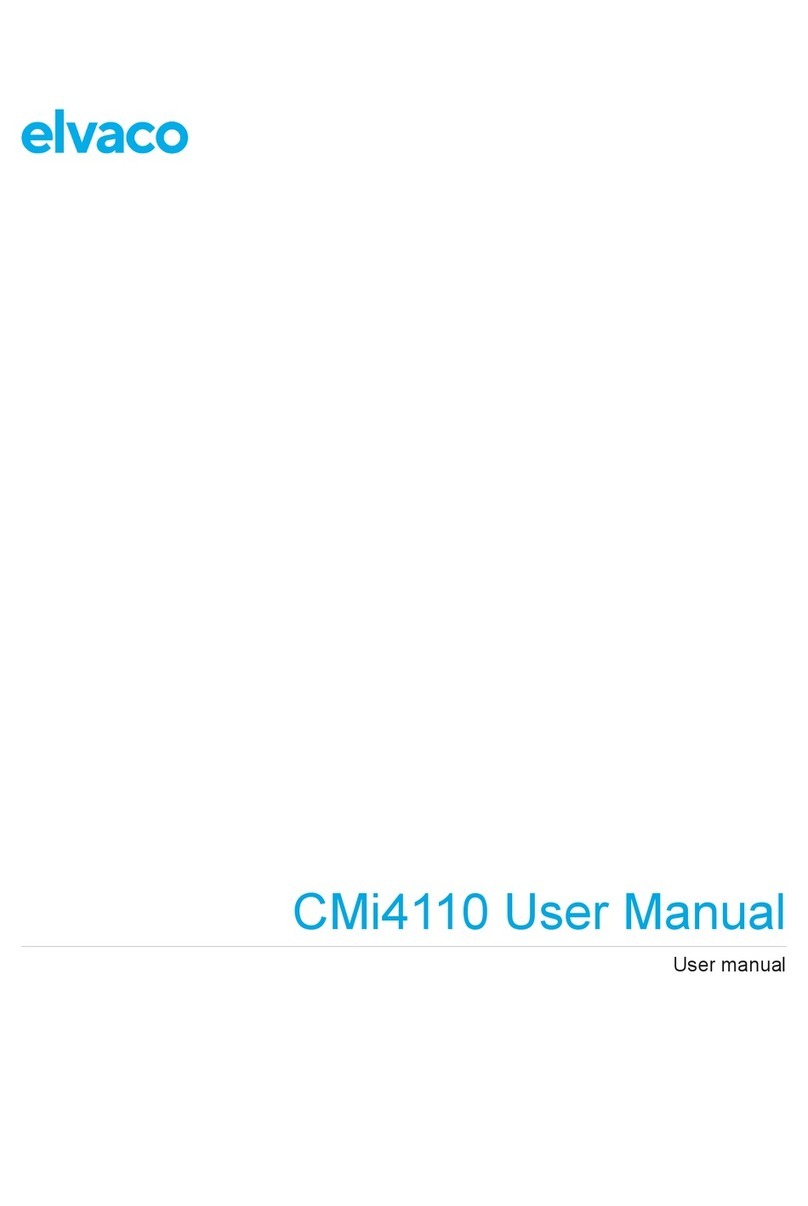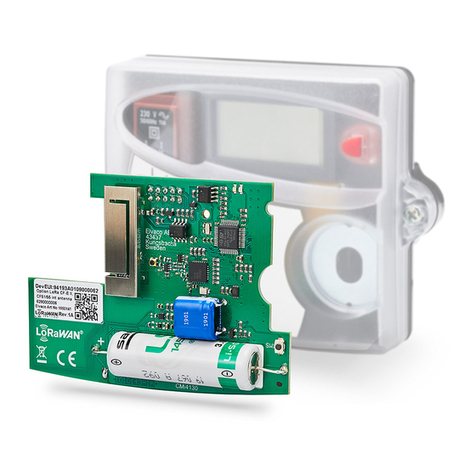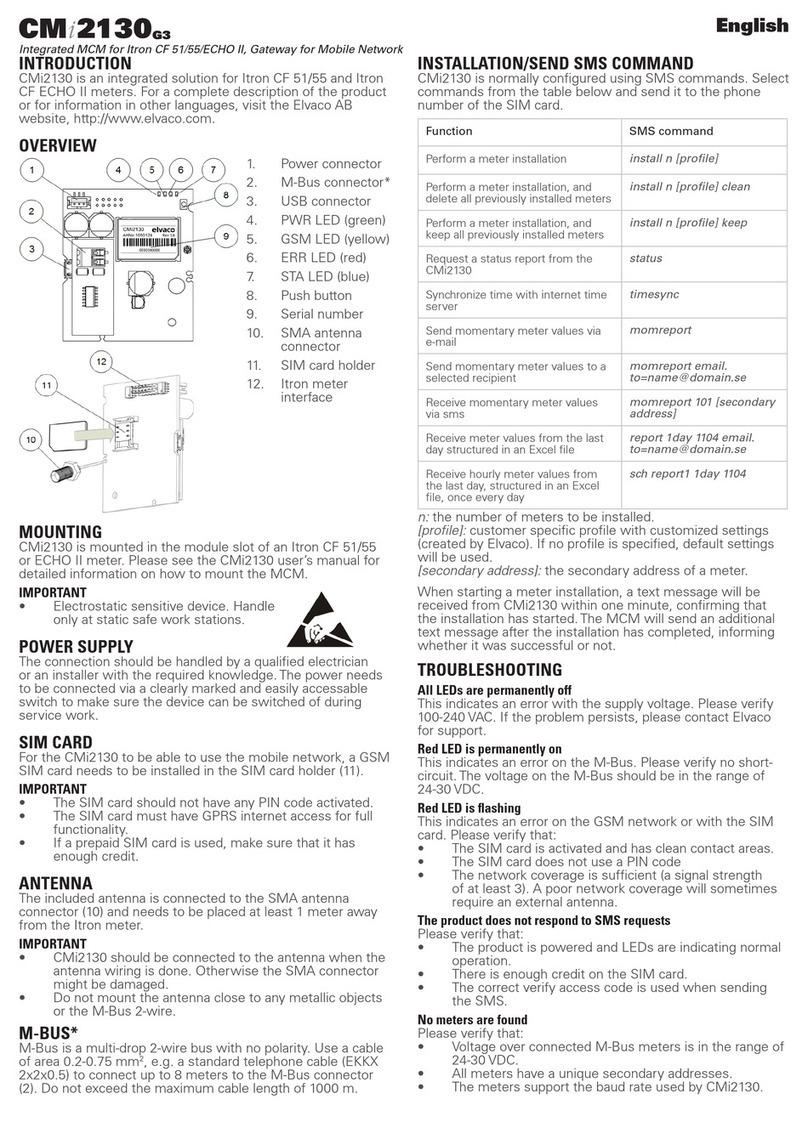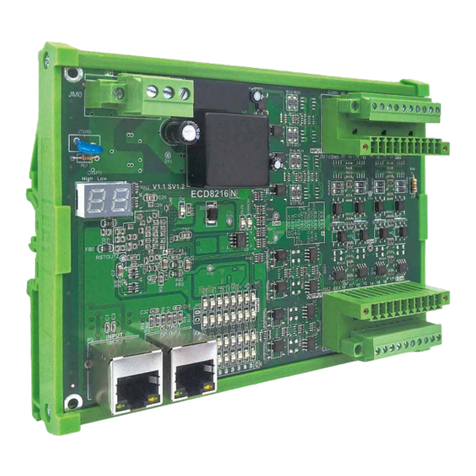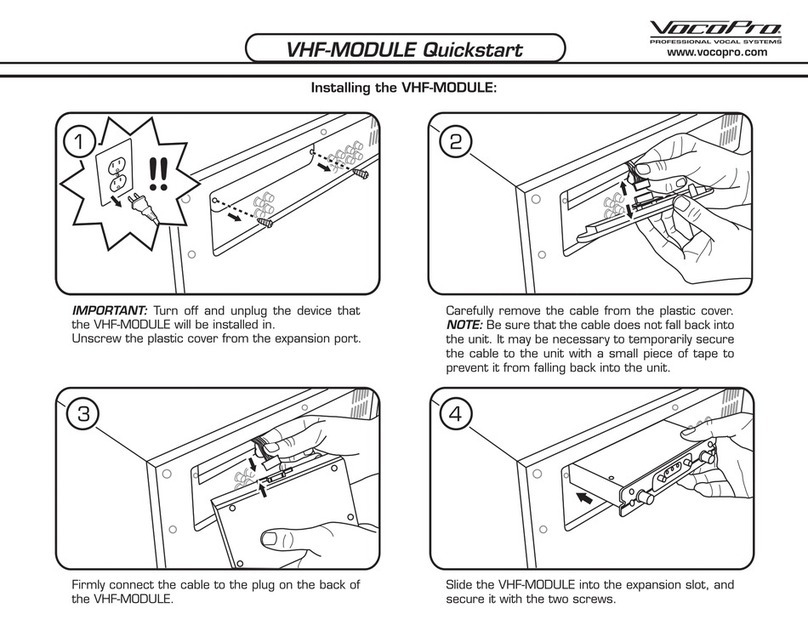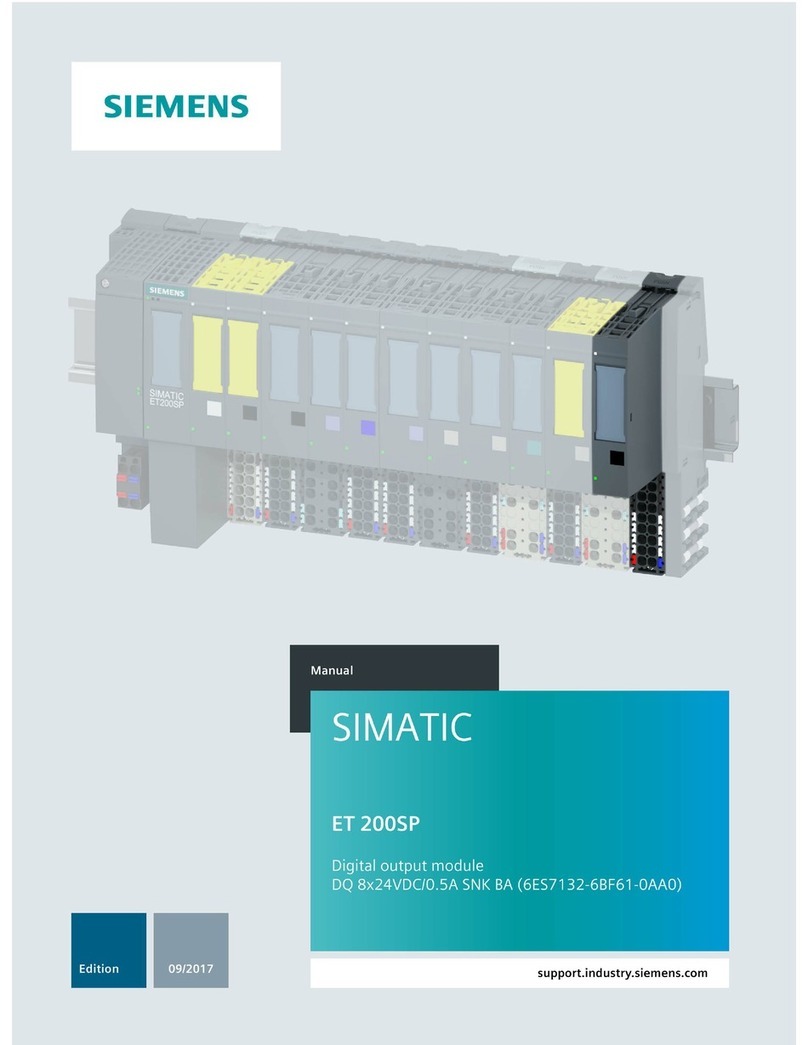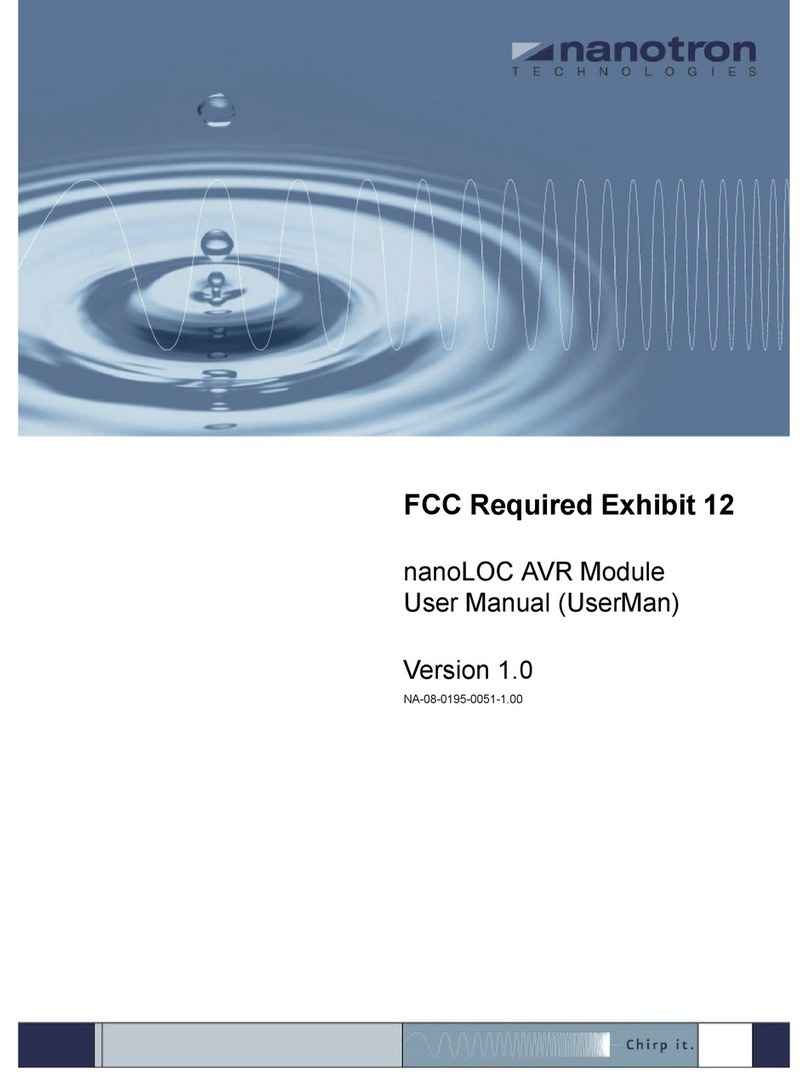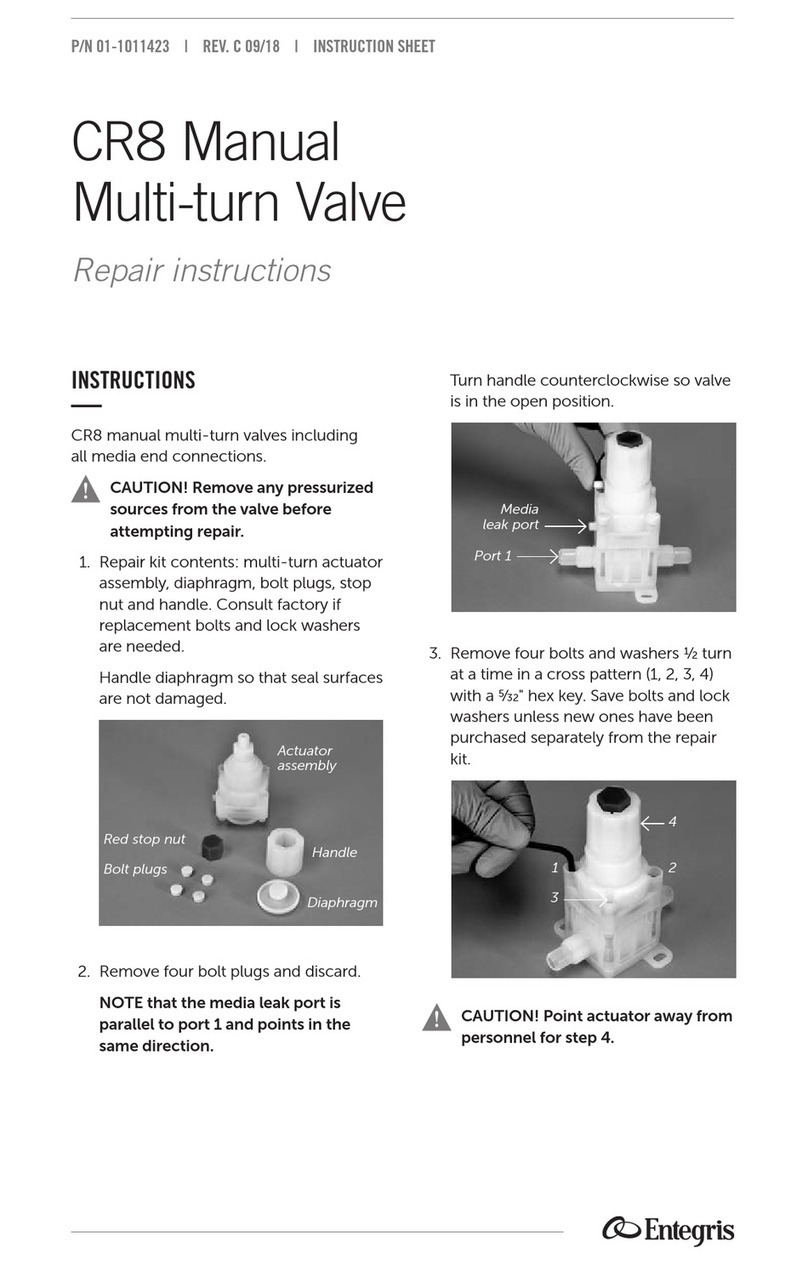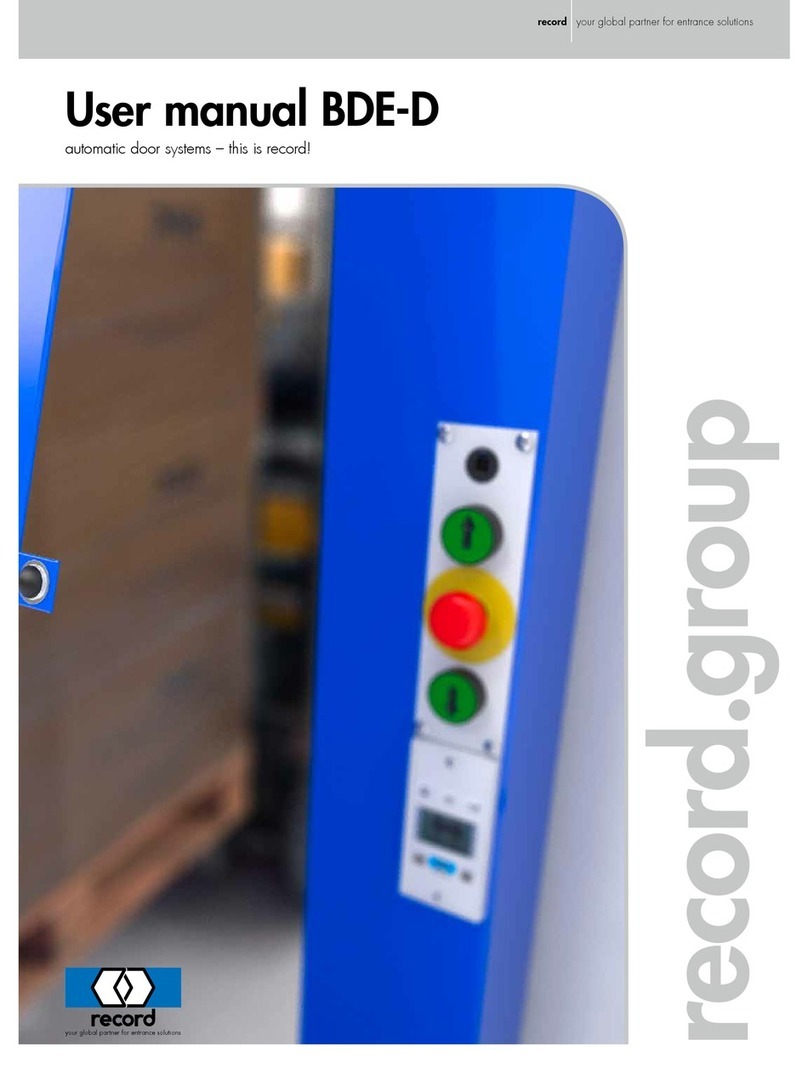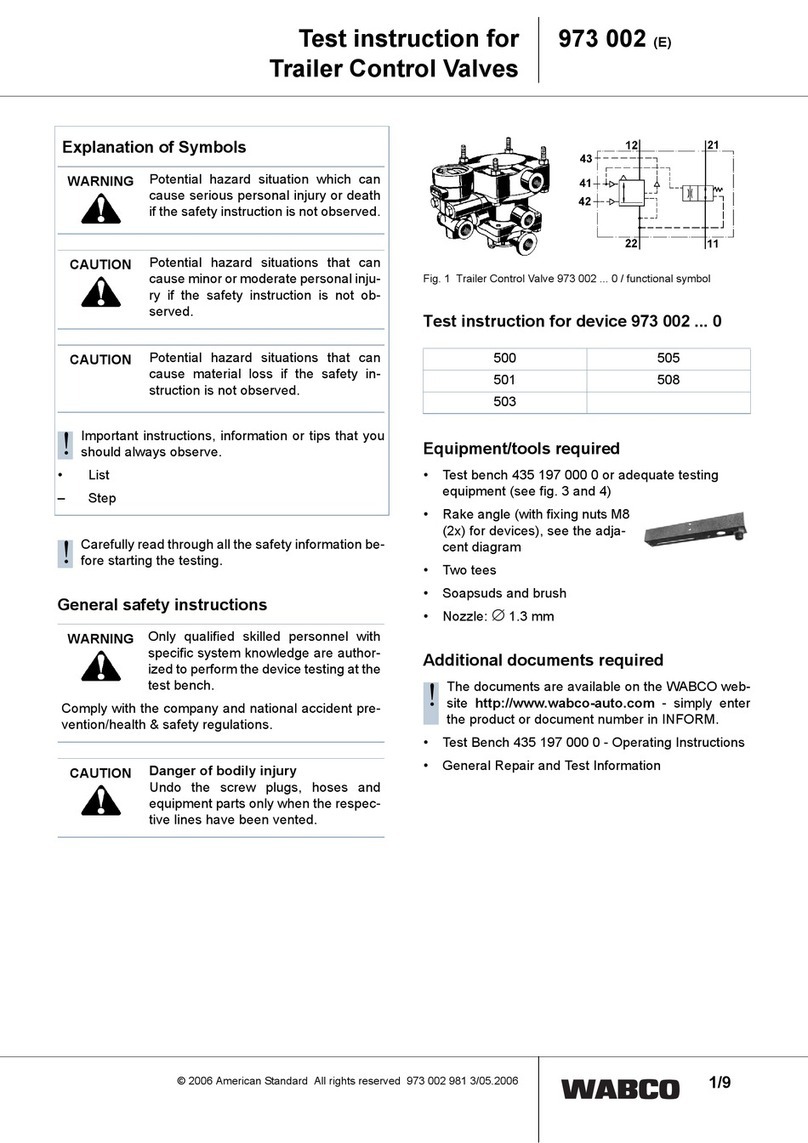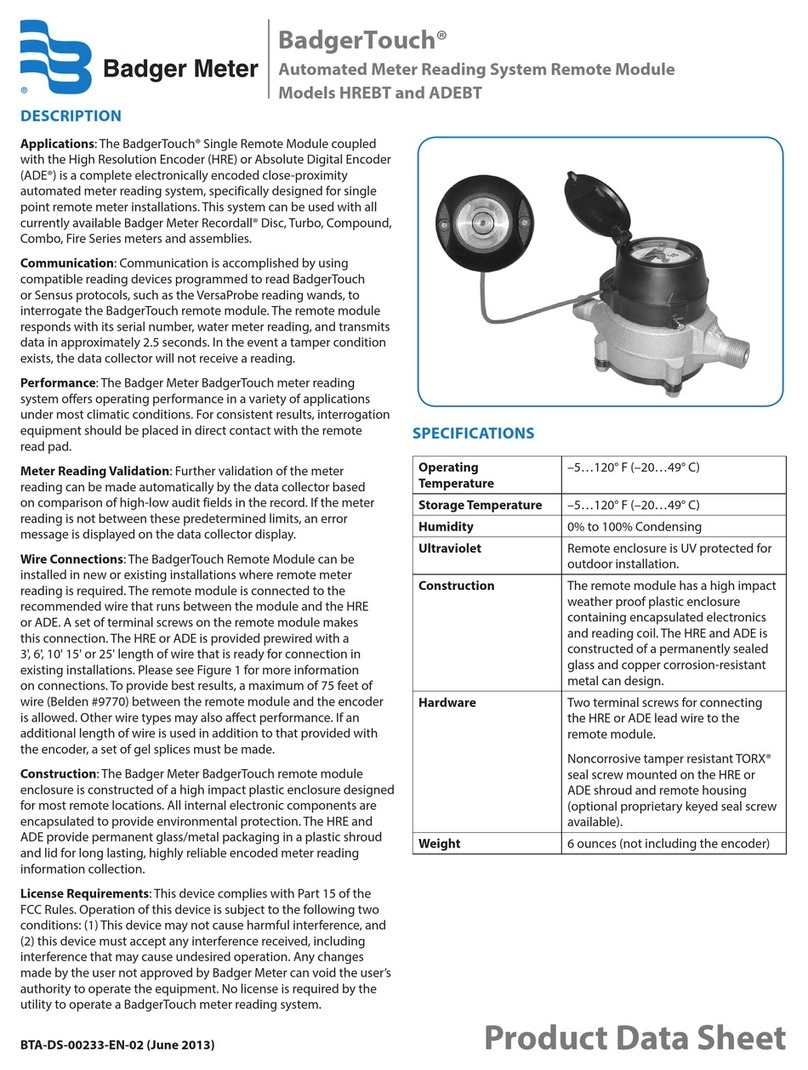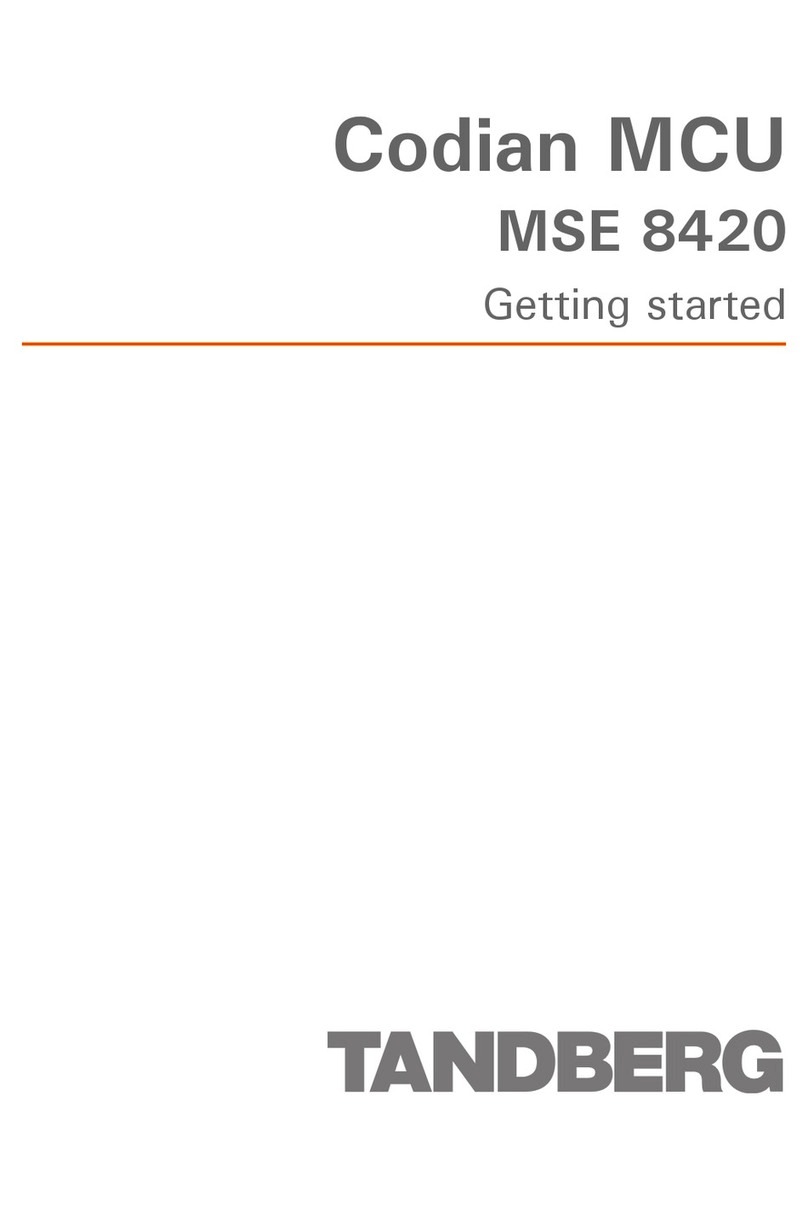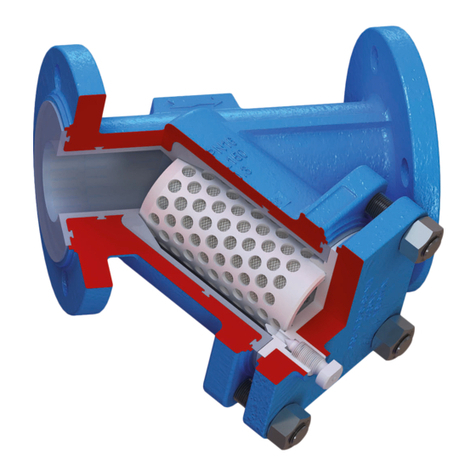Elvaco CMi6160 User manual

CMi6160 User’s Manual English
CMi6160
User’s Manual
English
V1.4

CMi6160 User’s Manual English
CMi6160 User’s Manual English
page | 2 (38)
[2022-10]
v1.4
Contents
1DOCUMENT NOTES .....................................................................................................4
1.1 COPYRIGHT AND TRADEMARK.........................................................................................4
1.2 CONTACTS..................................................................................................................... 4
2IMPORTANT USAGE AND SAFETY INFORMATION...................................................5
3USING THIS MANUAL ..................................................................................................6
3.1 PURPOSE AND AUDIENCE ............................................................................................... 6
3.2 ONLINE RESOURCES ...................................................................................................... 6
3.3 SYMBOLS.......................................................................................................................6
4INTRODUCTION............................................................................................................7
4.1 PURPOSE....................................................................................................................... 7
4.2 APPLICATION DESCRIPTION.............................................................................................7
4.3PRODUCT FEATURES......................................................................................................7
4.4 COMPATIBILITY...............................................................................................................7
5GETTING STARTED......................................................................................................8
5.1 PURPOSE....................................................................................................................... 8
5.2 PRODUCT OVERVIEW CMI6160......................................................................................8
Mount and start-up the device..................................................................................... 8
5.2.1 .................................................................................................................................... 8
5.2.2 Antenna connection..................................................................................................... 9
5.2.3 Mounting battery power............................................................................................... 9
5.2.4 Start-up and LED indications....................................................................................... 9
5.2.5 Switch off/reboot module........................................................................................... 10
6INTEGRATION GUIDE ................................................................................................11
6.1 PURPOSE..................................................................................................................... 11
6.2 INTRODUCTION.............................................................................................................11
6.3 STATUS AND CONFIGURATION PARAMETERS.................................................................. 11
DIEHL METERING SHARKY & SCYLAR error codes.............................................. 16
6.3.1 16
CHANGING APN VIA THE DM SYSTEM...........................................................................18
6.4 18
7ADMINISTRATION REFERENCE................................................................................19
7.1 PURPOSE..................................................................................................................... 19
7.2 SECURITY AND ACCESS CONTROL................................................................................. 19
7.3 SCHEDULING READOUTS /TRANSMISSIONS ...................................................................19
7.3.1 Synchronization......................................................................................................... 19
7.3.2 Randomized transmissions....................................................................................... 19
7.3.3 Data retransmission .................................................................................................. 20
Example 1............................................................................................................................... 20
Example 2............................................................................................................................... 21
7.4 CONFIGURATION OPTIONS ............................................................................................29
7.5TIME HANDLING............................................................................................................33
7.6 METER DATA TRANSMISSIONS....................................................................................... 33
7.7 MESSAGE FORMATS..................................................................................................... 33
7.8 MESSAGE ENCODING.................................................................................................... 33
7.8.1 M-Bus........................................................................................................................ 33

CMi6160 User’s Manual English
CMi6160 User’s Manual English
page | 3 (38)
[2022-10]
v1.4
7.8.2 JSON......................................................................................................................... 33
7.8.3 SenML/CBOR encoded telegram.............................................................................. 33
8TECHNICAL SPECIFICATIONS..................................................................................34
9TYPE APPROVALS.....................................................................................................36
10 DOCUMENT HISTORY................................................................................................37
10.1 VERSIONS....................................................................................................................37
11 REFERENCES.............................................................................................................38
11.1 TERMS AND ABBREVIATIONS .........................................................................................38
11.2 NUMBER REPRESENTATION ..........................................................................................38

CMi6160 User’s Manual English
CMi6160 User’s Manual English
page | 4 (38)
[2022-10]
v1.4
1 Document notes
All information in this manual, including product data, diagrams, charts, etc. represents information on
products at the time of publication, and is subject to change without prior notice due to product
improvements or other reasons. It is recommended that customers contact Elvaco AB for the latest
product information before purchasing a CMi Series product.
The documentation and product are provided on an “as is” basis only and may contain deficiencies or
inadequacies. Elvaco AB takes no responsibility for damages, liabilities or other losses by using this
product.
1.1 Copyright and trademark
© 2021, Elvaco AB. All rights reserved. No part of the contents of this manual may be transmitted or
reproduced in any form by any means without the written permission of Elvaco AB. Printed in Sweden.
CMi Series is a trademark of Elvaco AB, Sweden.
1.2 Contacts
Elvaco AB
Kabelgatan 2T
434 37 Kungsbacka
SWEDEN
Phone: +46 300 30250
E-Mail: [email protected]om
Elvaco AB Technical Support
Phone: +46 300 434300
E-Mail: support@elvaco.se
Online: http://www.elvaco.com

CMi6160 User’s Manual English
CMi6160 User’s Manual English
page | 5 (38)
[2022-10]
v1.4
2 Important usage and safety information
The following safety precautions must be observed during all phases of the operation, usage, service or
repair of any CMi Series product. Users of the product are advised to convey the information to users and
operating personnel and to incorporate these guidelines into all manuals supplied with the product.
Failure to comply with these precautions violates safety standards of design, manufacture and intended
use of the product. Elvaco AB assumes no liability for customer’s failure to comply with these
precautions.
CMi6160 receives and transmits radio frequency energy while switched on. Remember that interference
can occur if the product is used close to TV sets, radios, computers or inadequately shielded equipment.
Follow any special regulations and always switch off the product wherever forbidden, or when you
suspect that it may cause interference or danger.
The device or antenna of the product must not be mounted closer than 0.5 m from areas where people
are staying permanently in order not to risk exposing people to RF fields.
To use the product's NFC TAG, follow the instructions issued by the manufacturer of the NFC reader for
safe and efficient operation.
Ensure yourself that power supply and/or battery-unit connected to CMi6160 fulfil EN 62368-1 or
equivalent safety standard.
For guaranteed lifetime of a battery-operated device, configuration and settings must be approved by
Elvaco and not changed during the lifetime of the device.

CMi6160 User’s Manual English
CMi6160 User’s Manual English
page | 6 (38)
[2022-10]
v1.4
3 Using this manual
3.1 Purpose and audience
This manual provides all information needed to mount, deploy and configure CMi6160 and targets
installers and system integrators.
This manual will provide device-specific information for CMi6160, such as status/configuration
parameters and message formats, needed to integrate the module with a DM system and a receiving
MDM server.
It is meant to be used along with the common “Elvaco NB-IoT Module Integrators Manual”, which
provides information about the bootstrapping process, device management, data transport and
encryption.
3.2 Online resources
To download the latest version of this user’s manual, or to find information in other languages, please
visit https://www.elvaco.com/.
3.3 Symbols
The following symbols are used throughout the manual to emphasize important information and useful
tips:
The Note symbol is used to mark information that is important to take into consideration for
safety reasons or to assure correct operation of the meter connectivity module.
The Tip symbol is used to mark information intended to help you get the most out of your
product. It can for example be used to highlight a possible customization option related to the
current section.
The following symbols are used to provide information on how the product should be used:
Symbol
Description
Waste electrical products should not be disposed of with household waste. Please recycle
where facilities exist. Contact your Local Authority for recycling advise.
Electrostatic-sensitive device. Please observe the necessary ESD protective measures when
installing the MCM.

CMi6160 User’s Manual English
CMi6160 User’s Manual English
page | 7 (38)
[2022-10]
v1.4
4 Introduction
4.1 Purpose
This chapter provides a general description of CMi6160. In the next-coming sections you will learn more
about possible applications for the product and how CMi6160 can be combined with other products to
build versatile solutions.
4.2 Application description
CMi6160 is a cost-effective NB-IoT meter connectivity module, which is mounted inside a DIEHL
metering SHARKY & SCYLAR heat meter. As soon as the device has been mounted and deployed, it will
start to deliver meter data to a receiving system via the NB-IoT (LPWAN) network. The product is ideal
for applications where long range and high energy-efficiency are required and a lower bandwidth is not a
concern.
4.3 Product features
Key features of CMi6160 include:
•IoT-ready
As soon as the meter connectivity module has been mounted and started up, it will automatically
initiate transmission of meter data without any manual steps needed. The CMi6160 is prepared
for seamless integration with all leading IoT platforms.
•Battery operated
CMi6160 has several options for power supply. It can be battery operated for up to 13 years with
daily transmission of meter data.
•One-Touch Commissioning
The product uses the Elvaco One-Touch Commissioning (OTC) to configure and deploy products
quickly and securely. Using the Elvaco OTC App, simply enter your desired settings and place
your mobile phone on the right side of the SHARKY & SCYLAR meter. New settings will be
applied instantaneously via NFC.
•Flexible message scheme
CMi6160 has different message formats to choose from, which makes it easy to setup the device
for your specific project.
4.4 Compatibility
CMi6160 is compatible with DIEHL metering SHARKY 775 and SCYLAR 548 meters. CMi6160 is
supplied with external DIEHL battery pack.

CMi6160 User’s Manual English
CMi6160 User’s Manual English
page | 8 (38)
[2022-10]
v1.4
5 Getting started
5.1 Purpose
This chapter provides instructions on how to get started with the CMi6160. After reading and carefully
following each step of this chapter, the MCM will be mounted and deployed.
5.2 Product overview CMi6160
Figure 1: CMi6160 frontside
1. Meter Interface
2. LED - Green
3. LED - Red
4. Power Connector
5. SIM (Nano)
6. Push Button
7. Antenna Connector (MCX female)
8. NFC Antenna
5.2.1 Mount and start-up the device
Before mounting the module in the meter, make sure that a SIM card is installed in the SIM card slot ((5)
in Figure 1), as illustrated in Figure 2.
Figure 2: SIM-card installation

CMi6160 User’s Manual English
CMi6160 User’s Manual English
page | 9 (38)
[2022-10]
v1.4
When the SIM card has been mounted, open the calculator by folding down the side catches. Lock the
module into the appropriate slot (preferable slot 2, see Figure 3, mandatory when internal antenna is
used) and carefully connect the pre-formed ribbon cable at both ends.
Figure 3: Module slots - SHARKY 775 (Left) & SCYLAR 548 (Right)
5.2.2 Antenna connection
If the CMi6160 is equipped with internal antenna no additional actions need to be taken. If external
antenna is used, disconnect the internal antenna (if it is mounted) from MCX connector of CMi6160. See
Figure 4 below for internal antenna positioning.
Connect an external antenna (released by the supplier) with MCX connector to the module CMi6160 in
the meter. Make a hole in rubber gromets/sealing and push the mcx connector through the
gromet/sealing. Make sure thicker part of antenna cable is in gromet/seal. Push the connector gently into
the antenna connector (7) on the module.
Figure 4: Antenna connection.
5.2.3 Mounting battery power
See manual for external battery pack. Connect power cable from external battery back to battery power
connector (4) of the CMi6160.
5.2.4 Start-up and LED indications
Module activation
Upon delivery, CMi6160 will be set to passive mode, which means that no messages will be transmitted
from the module. Please make sure a SIM card (size: Nano) has been mounted before activating the
module. There are two ways to activate the module:
1. Press down the push button for at least 5 seconds until the green LED lights up, then release the
button. CMi6160 will confirm start-up by flashing its red and green LEDs for one second.

CMi6160 User’s Manual English
CMi6160 User’s Manual English
page | 10 (38)
[2022-10]
v1.4
2. Open the Elvaco OTC app available in Google Play or App Store and scan the module (make
sure NFC is activated on the phone). Go to Apply mode, set the power mode to “active” and
press Apply settings.The NFC is reachable from backside of meter or front if meter cover is
removed. The mobile phone should vibrate three times. This indicates that settings have
successfully been applied.
Network Connection
When activated, CMi6160 will attempt to connect to the mobile network. The phase is indicated by the
green and red LED lights up for 1 second, followed by short flashes on the green LED until the module
has joined the mobile network. When CMi6160 succeeds in connecting to the mobile network, the green
LED will lighten up for 8 seconds, as illustrated by 2.
If the module fails to join the mobile network, it will perform retries until it succeeds. The time between
each attempt will increase for every attempt until it is performed once every day. A new join attempt cycle
can be manually started anytime by using the push button to reboot the module or by deactivating and
activating the module using the Elvaco OTC App.
Figure 5: LED indicators, network connection
5.2.5 Switch off/reboot module
To reboot the module, press and hold the push button for 5-15 seconds. Release the button when the
green LED is lit.
To switch off the module, press and hold the push button for 15-20 seconds. Release the button when
the red LED is lit.
Figure 6: LED indication, reboot / switch-off

CMi6160 User’s Manual English
CMi6160 User’s Manual English
page | 11 (38)
[2022-10]
v1.4
6 Integration guide
6.1 Purpose
This chapter provides the technical details needed to integrate an Elvaco NB-IoT module with a MDM
and/or DM server.
Note that this section will provide device-specific information and is meant to be used with the
common “Elvaco NB-IoT MCM Integrator’s guide”.
6.2 Introduction
For device management, the module will act as a LWM2M device connecting to a LwM2M server. The
Device Management system enables configuration and monitoring of a CMi6160 module remotely. This
includes setting configuration parameters, update the firmware and trigger momentaneous/historical
readouts of the module. For meter data transport, the module uses the MQTT-SN protocol.
Upon activation, the device will attempt to connect to its configured bootstrap server via the mobile (NB-
IoT) network. When successful, the module will receive connection credentials, i.e. IP addresses to the
DM server and the meter data server.
The module will thereafter connect to the DM server and perform a DTLS handshake to generate the
session key used to encrypt the data that is transmitted between DM server and module. Note that using
DTLS is optional, and the product also support unencrypted communication.
The module will thereafter connect to the MQTT-SN gateway and perform a DTLS handshake to
generate the sessions keys used to encrypt the meter data transport.
Each module has a security chip where a device-unique set of keys are stored. These are provisioned to
the module during production. The UDP transport of both DM and MDM can be secured using DTLS 1.2.
Either the pre-provisioned keys can be used, or new keys can be provisioned during the bootstrap phase.
6.3 Status and configuration parameters
Table 1 below provides a list of all CMi6160 status and configuration parameters accessible on LwM2M.
Op.
LwM2M object
LwM2M resource
ID
Type
Range or
Enumeration
Comment
R
LwM2M Security
LWM2M Server
URI
0/0/0
String
Bootstrap URI
R
LwM2M Security
Bootstrap server
0/0/1
Bool
TRUE
R
LwM2M Security
Security Mode
0/0/2
Integer
0..4
BS Security
mode
0 = PSK mode
3 = No security
R
LwM2M Security
PSK Identity
0/0/3
Opaque
DevEUI
-
LwM2M Security
Secret Key
0/0/4
Opaque
Bootstrap PSK
R
LwM2M Security
Short Server ID
0/0/10
Integer
1..65534
R
LwM2M Server
Short Server ID
1/0/0
Integer
1..65534
R
LwM2M Server
Lifetime
1/0/1
Integer
E
LwM2M Server
Bootstrap-
Request Trigger
1/0/9
R(W)
LwM2M Security
LWM2M Server
URI
0/1/0
String
DM ServerURI
Writable by
Bootstrap server
R
LwM2M Security
Bootstrap server
0/1/1
Bool
FALSE

CMi6160 User’s Manual English
CMi6160 User’s Manual English
page | 12 (38)
[2022-10]
v1.4
Op.
LwM2M object
LwM2M resource
ID
Type
Range or
Enumeration
Comment
R(W)
LwM2M Security
Security Mode
0/1/2
Int
0..4
DM Security
mode
Writable by
Bootstrap server
R
LwM2M Security
PSK Identity
0/1/3
Opaque
DM PSK identity
(DevEUI)
(W)
LwM2M Security
Secret Key
0/1/4
Opaque
DM PSK
Writable by
Bootstrap server
R
LwM2M Security
Short Server ID
0/1/10
Integer
1..65534
R
LwM2M Server
Short Server ID
1/1/0
Integer
1..65534
R
LwM2M Server
Lifetime
1/1/1
Integer
DM lifetime
E
LwM2M Server
Registration
Update Trigger
1/1/8
R
Device
Manufacturer
3/0/0
String
Manufacturer
("Elvaco")
R
Device
Model Number
3/0/1
String
Product model
("CMi6160")
R
Device
Serial Number
3/0/2
String
DevEUI
R
Device
Firmware Version
3/0/3
String
Firmware
version
E
Device
Reboot
3/0/4
Reboot
R
Device
Available Power
Sources
3/0/6/0
Integer
0..7
Power source
1: Internal
battery
2: External
battery
6: AC (Mains)
power
R
Device
Power Source
Voltage
3/0/7/0
Integer
Power source
voltage
(Millivolt)
R
Device
Battery level
3/0/9
0..100
Battery level (in
%)
R
Device
Error Code
3/0/11/0
0..8
Error codes,
according to
LwM2M 1
RW
Device
Current Time
3/0/13
Time
Current time
RW
Device
UTC Offset
3/0/14
String
UTC Offset
UTC+X (ISO
8601)
R
Device
Hardware version
3/0/18
String
Hardware
version
R
Connectivity
Monitoring
Network Bearer
4/0/0
Integer
0..50
7 = NB-IoT
R
Connectivity
Monitoring
Available Network
Bearer
4/0/1/0
Integer
0..50
7 = NB-IoT
R
Connectivity
Monitoring
Radio Signal
Strength
4/0/2
Integer
RSRP
(NRSRP)
R
Connectivity
Monitoring
APN
4/0/7/0
String
APN
R
Connectivity
Monitoring
Cell ID
4/0/8
Integer
Cell ID
R
Connectivity
Monitoring
SMNC
4/0/9
Integer
0..999
MNC
PLMN = SMNC
+ SMCC

CMi6160 User’s Manual English
CMi6160 User’s Manual English
page | 13 (38)
[2022-10]
v1.4
Op.
LwM2M object
LwM2M resource
ID
Type
Range or
Enumeration
Comment
R
Connectivity
Monitoring
SMCC
4/0/10
Integer
0..999
MCC
PLMN = SMNC
+ SMCC
W
Firmware
Update
Package URI
5/0/1
Firmware
Update URI
E
Firmware
Update
Update
5/0/2
Firmware
Update Trigger
R
Firmware
Update
State
5/0/3
Integer
0..3
Firmware
Update Status
0: Idle
1: Downloading
2: Downloaded
3: Updating
R
Firmware
Update
Update result
5/0/5
Integer
Firmware
Update Result
R
Firmware
Update
Firmware Update
Protocol Support
5/0/8/0
Integer
0..5
0 = CoAP
R
Firmware
Update
Firmware Update
Delivery Method
5/0/9
Integer
0..2
0 = Pull only
R
LwM2M Cellular
Connectivity
PSM Timer
10/0/4
Integer
NB-IoT T3412.
Will be writeable
in future
releases.
R
LwM2M Cellular
Connectivity
Active Timer
10/0/5
Integer
NB-IoT T3324.
Will be writeable
in future
releases.
R
LwM2M Cellular
Connectivity
eDRX parameters
for NB-S1 mode
10/0/9
Opaque
8 bit
NB-IoT eDRX.
Will be writeable
in future
releases.
"This resource is
encoded as
octet 3 in
[3GPP-
TS_24.008,
clause
10.5.5.32]."
R
LwM2M Cellular
Connectivity
Activated Profile
names
10/0/11
ObjLink
Link to APN
Connection
Profile object
RW
LwM2M APN
Connection
Profile
Profile name
11/[0,1]/0
String
RW
LwM2M APN
Connection
Profile
APN
11/[0,1]/1
String
Manual APN
Writable in
object resource
1.
RW
LwM2M APN
Connection
Profile
Auto select APN
by device
11/[0,1]/2
Boolean
Auto APN Mode
Writable in
object resource
1.
RW
LwM2M APN
Connection
Profile
Authentication
Type
11/[0,1]/4
Integer
0..3
3 = None,
Writing currently
not supported
RW
Elvaco MDM
Server
URI
33905/0/
0
String
MDM Server
URI

CMi6160 User’s Manual English
CMi6160 User’s Manual English
page | 14 (38)
[2022-10]
v1.4
Op.
LwM2M object
LwM2M resource
ID
Type
Range or
Enumeration
Comment
RW
Elvaco MDM
Server
Protocol
33905/0/
1
Integer
0..
MDM Server
Protocol
0 = MQTT-SN
RW
Elvaco MDM
Server
Transport Security
Mode
33905/0/
2
Integer
0..4
MDM Server
Transport
Security Mode
0 = PSK mode
3 = No security
W
Elvaco MDM
Server
Transport Secret
Key
33905/0/
5
Opaque
MDM Server
Transport Secret
Key
RW
Elvaco MDM
Server
Connection config
33905/0/
10
Integer
0..1
MDM Server
Connection
Config
0: Optimized
1: Compliant
RW
Elvaco MDM
Server
Topic
33905/0/
11
String
MDM Server
Topic
RW
Elvaco MCM
Config
Meter readout
interval
33906/0/
0
Integer
5..1440
Meter Readout
Interval
RW
Elvaco MCM
Config
Report data
encoding
33906/0/
1
Integer
Report Data
Encoding
0: Reserved
1: JSON
2: MBus
3. SenML/CBOR
RW
Elvaco MCM
Config
Report frame type
33906/0/
2
Integer
CMi6160:
42: Standard
43: Extended
RW
Elvaco MCM
Config
Eco mode
Enabled
33906/0/
3
Boolean
Not used
RW
Elvaco MCM
Config
NFC Enabled
33906/0/
4
Boolean
R
Elvaco MCM
Config
NFC Config-
locked
33906/0/
5
Boolean
W
Elvaco MCM
Config
Adjust time
33906/0/
6
Integer
E
Elvaco MCM
Config
Instantaneous
readout trigger
33906/0/
10
Trigger a meter
readout
instantaneously.
E
Elvaco MCM
Config
Historic resend
trigger
33906/0/
13
Execute arguments given as Unix timestamps:
0=’<start-time>’,1=’<stop-time>’,2=’<min-
interval>’
R
Elvaco MCM
Config
Historic resend
status
33906/0/
14
Integer
0..50
Number of
measurements
queued for
uplink
E
Elvaco MCM
Config
Apply APN
changes
33906/0/
15
Stages changes in APN and APN mode,
resets the device and tries to use those
changes.
R
Elvaco NB-IoT
Status
Uptime
33907/0/
0
Integer
[s]
R
Elvaco NB-IoT
Status
Average current
consumption
33907/0/
1
Integer
[uA]
R
Elvaco NB-IoT
Status
Network
classification
33907/0/
2
Integer
0: Excellent
1: Good
2: Fair
3: Poor

CMi6160 User’s Manual English
CMi6160 User’s Manual English
page | 15 (38)
[2022-10]
v1.4
Op.
LwM2M object
LwM2M resource
ID
Type
Range or
Enumeration
Comment
R
Elvaco NB-IoT
Status
ECL
33907/0/
3
Integer
0..2
R
Elvaco NB-IoT
Status
RSSI
33907/0/
4
Integer
[dBm *10]
R
Elvaco NB-IoT
Status
SNR
33907/0/
5
Integer
[dB*10]
R
Elvaco NB-IoT
Status
MDM connection
status
33907/0/
10
Integer
0: OK
1: Connecting
2: No
credentials
3: DTLS
Rejected
4: MQTT-SN
Failed
5: MQTT-SN
Rejected
R
Elvaco Meter
Info
Meter Model
33908/0/
0
String
-
R
Elvaco Meter
Info
Meter ID
33908/0/
1
Integer
R
Elvaco Meter
Info
Comm status
33908/0/
2
Integer
0: OK
1: No meter
detected
2: Error
R
Elvaco Meter
Info
Error flags
33908/0/
3
Opaque
Meter Error flags
R
Elvaco NB-IoT
Info
IMSI
33909/0/
0
Integer
SIM IMSI
R
Elvaco NB-IoT
Info
ICCID
33909/0/
1
Integer
SIM ICCID
R
Elvaco NB-IoT
Info
Registrations
33909/0/
2
Integer
NB-IoT
Registrations
R
Elvaco NB-IoT
Info
Last Registration
duration
33909/0/
3
Integer
NB-IoT Last
Regsitration
Duration
R
Elvaco NB-IoT
Info
Modem Model
33909/0/
4
String
NB-IoT Modem
Model
R
Elvaco NB-IoT
Info
Modem Firmware
33909/0/
5
String
NB-IoT Modem
Firmware
Table 1: CMi6160 status/configuration parameters

CMi6160 User’s Manual English
CMi6160 User’s Manual English
page | 16 (38)
[2022-10]
v1.4
6.3.1 DIEHL METERING SHARKY & SCYLAR error codes
The error codes transported from an MCM is the status byte of the M-Bus header. Bits 71:64 of M-Bus
header.
Meaning of Error Codes
The following information is from the documentation received from Diehl Metering. It has only been
enhanced by formatting, contents is as-is straight from the document. For latest error description please
use the latest documentation available from DIEHL Metering. Table 2 corresponds to Table 7 of EN
13757-3:2013 for M-Bus.
Bit
Description
Usage
0
reserved
-
1
any application error
-
2
power low
E-8, E-9
3
permanent error
C-1, E-4
4
temporary error
E-1, E-3, E-6, E-7, leak error
5
manufacturer specific
see table below
6
manufacturer specific
see table below
7
manufacturer specific
see table below
Table 2: DIEHL error codes
Table 3 explains the position of error codes from the User’s Manual of the meter.
Error
C-1
E-8
E-4
E-1
E-7
E-9
E-3
E-6
Leak
error
E-5
Mbus
status
Byte
0x08
0x04
0x28
0x50
0x70
0x84
0xB0
0xD0
0xF0
0x10
Prio
Highest
Lowest
Table 3: Error code positioning

CMi6160 User’s Manual English
CMi6160 User’s Manual English
page | 17 (38)
[2022-10]
v1.4
Table 4 contains error display codes and corresponding explanations.
Error display
Meaning
C-1
Basic parameter error in flash or RAM
E-1
Temperature measurement error
Temperature range exceeded [-9.9 °C … 190 °C]
Sensor short-circuit
Sensor break
E-3**
Temperature sensors reversed in hot and cold lines
E-4
Hardware error in ultrasonic measurement
Ultrasonic transducer defective
Short-circuit in ultrasonic transducer
E-5
Reading too frequently
M-Bus communication not possible for short time
E-6**
Wrong direction of flow
Flow sensor incorrectly installed
E-7
No meaningful ultrasonic receive signal
Air in the measuring path
E-8
No primary voltage (only if mains unit used)
Powered by back-up battery
E-9
Warning: battery nearly exhausted
E-A*
Leakage: pipe break detected
E-b*
Leakage: leakage detected in energy meter
E-C*
Leakage: leakage pulse input 1
E-d*
Leakage: leakage pulse input 2
Table 4: Error code translation
* Optional
** application-dependent
When the module is unable to read a data field, that data field will be excluded in the payload.

CMi6160 User’s Manual English
CMi6160 User’s Manual English
page | 18 (38)
[2022-10]
v1.4
6.4 Changing APN via the DM system
Since changing APN is a potentially hazardous operation that may render the device disconnected from
the mobile network, there is a rollback functionality in place when changing the APN.
To change APN, write the APN to the resource /10/1/1 and set APN mode to manual in /10/1/2. Once
done, stage the changes by executing /33906/0/15. When executed, the device will reset and try to use
the new APN. If the device manages a successful bootstrapping, the new APN will be saved as the
default. If a successful bootstrapping has not happened for some time, the device will roll back to the old
APN and reset again.

CMi6160 User’s Manual English
CMi6160 User’s Manual English
page | 19 (38)
[2022-10]
v1.4
7 Administration reference
7.1 Purpose
This chapter contains detailed information about configuring options for CMi6160.
7.2 Security and access control
CMi6160 has a configuration lock feature, which prevents unauthorized access to the module. When
configuration lock has been enabled, a Product Access Key (PAK) will be needed to access the device
via NFC. The Product Access Key is claimed by the end-user to his One-Touch Commissioning (OTC)
account via the Elvaco OTC App or the OTC web interface.
Note that the default setting of the CMi6160 is Open, meaning the user must set it to Lock
to activate the configuration lock. In section 7.5, all default configurations are listed.
7.3 Scheduling readouts and transmissions
A Readout refers to a readout of meter data and storing the information locally in the device memory.
A Transmission refers to a sending a set of readouts from the device over NB-IoT network to a LWM2M
or MQTT-SN server.
A combination of above is set to achieve the functionality specified by the project/customer.
7.3.1 Time handling
The module relies on the meter’s clock for keeping time. Time in the meter is assumed to be in standard
local time (no DST). When synchronizing time in the meter using the OTC App, timeserver or network
time. Local standard time is always used, even if DST is in effect. The timestamped meter data sent from
the module can be adjusted to be sent in UTC by specifying the “UTC offset” configuration parameter.
The UTC offset will be subtracted from the timestamp prior to transmission. If the meter is in Sweden,
which uses CET (Central European Time), it should have UTC offset set to +60 (+1h). In this case at time
12.00 a telegram is sent with timestamp 11.00 as this is the corresponding UTC time. A meter in New
York (USA) should have a UTC offset of -300 (-5h) etc. A UTC offset of 0 means the meter time is used
as-is.
7.3.2 Synchronization
All schedules are based on a synchronization with a clock. That means that if a readout schedule of 60
minutes is used, it is synchronized on top of the hour, so 11:00, 12:00, 13:00 etc. 120 minutes will give
12:00, 14:00, 16:00 etc.
When time in the module (or meter) is synchronized a rescheduling takes place such that the next meter
readout is made according to an updated time.
To handle the case where time synchronization “moves time” past a previously planned readout (like
23.58 → 00.02) the module will always make a readout and transmission of a new value when time is
synchronized. The device will therefore send an additional readout which can be masked on the server-
side.
7.3.3 Randomized transmissions
In order to prevent a large population of devices from transmitting data at exactly the same time the
devices should have a random delay before transmitting data. The delay should be configurable via
NFC/DM.
Readouts from the meter are always performed on top of the hour, 11.00, 13.00 etc. Transmissions can

CMi6160 User’s Manual English
CMi6160 User’s Manual English
page | 20 (38)
[2022-10]
v1.4
be carried out at other times but are planned at full ours given a set transmission interval (Ttransmit). The
figure below illustrates this. The transmissions are planned at time T1. The actual Ttransmit is a random time
between (T1+ Toffset) and (T1+ Toffset + Tdelay).
Ttransmit, Toffset and Tdelay are parameters in the product.
Conditions
•Toffset + Tdelay <= Ttransmit
oThis should be checked by the device and the OTC App.
•If Ttransmit is reduced below Toffset + Tdelay, then Toffset should be set to 0 and Tdelay.= Ttransmit.
7.3.4 Data retransmission
If data cannot be sent, due for instance to network issues, there will be a number of retries after which the
device will give up and leave the readout as “unsent” in its storage. Next time a transmission is attempted
unsent data will be resent (if possible). Retransmission can be done by FIFO or LIFO.
Rules for retransmissions include maximum age of data, order of data, number of retransmitted data /
transmission interval,
Example 1
A device is configured the following way:
•Message encoding: M-Bus
•Auto upload order: FIFO
•Measurement interval: 60 minutes
•Transmit interval: 60 minutes
•Transmit offset: 15 minutes
•Transmit delay: 30 minutes
•Maximum uploads per transmission: 4
•Upload maximum age 72h
A network issue caused the module to be offline for 5 days, while still reading and storing measurement
data. When the device manages to go online the following scenario takes place.
•The device will start by transmitting measurement data that is 3 days old (FIFO order)
•The device will send 4 measurement telegrams per hour, at a randomly chosen time between
minute 15 and 45
•Each telegram contains a single readout, totaling 4 readouts per transmission
•The device will take approximately 1 day to “catch up” and start sending one measurement per
hour
Other manuals for CMi6160
1
This manual suits for next models
4
Table of contents
Other Elvaco Control Unit manuals
Popular Control Unit manuals by other brands
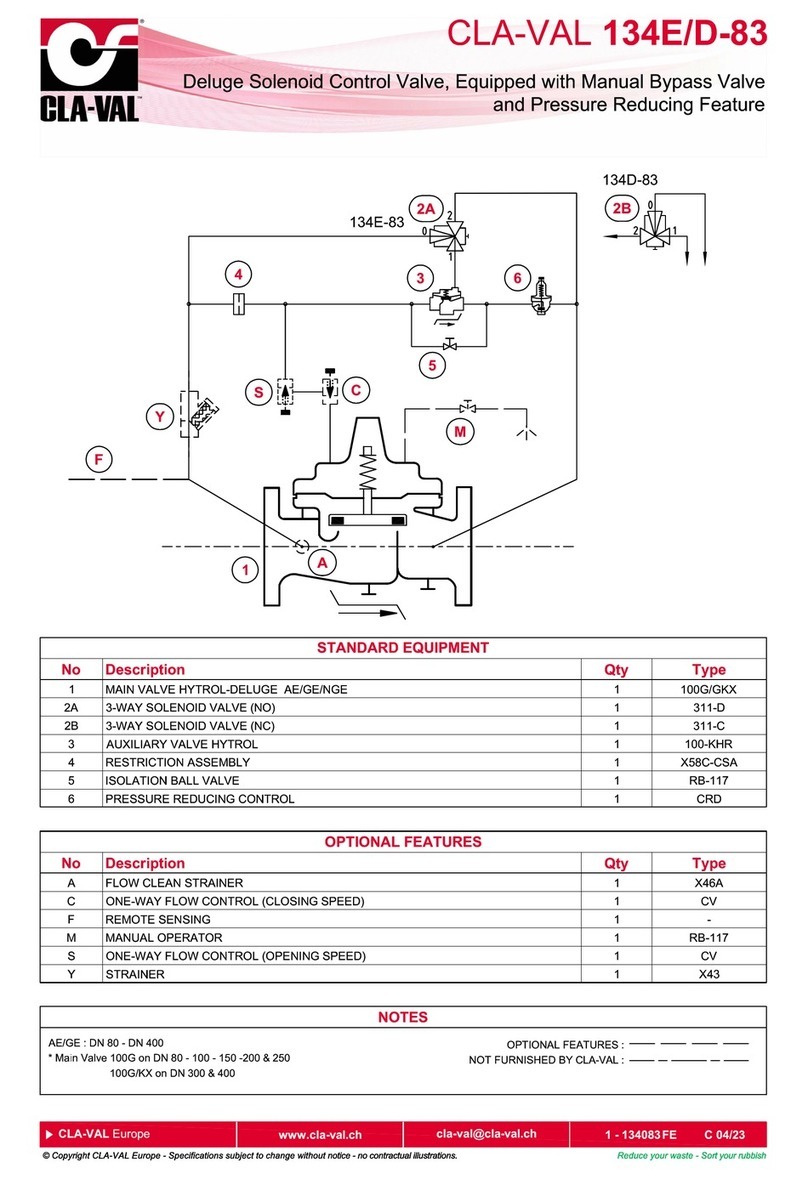
CLA-VAL
CLA-VAL 134E-83 manual

KONTRONIK
KONTRONIK TelMe Futaba Operation manual
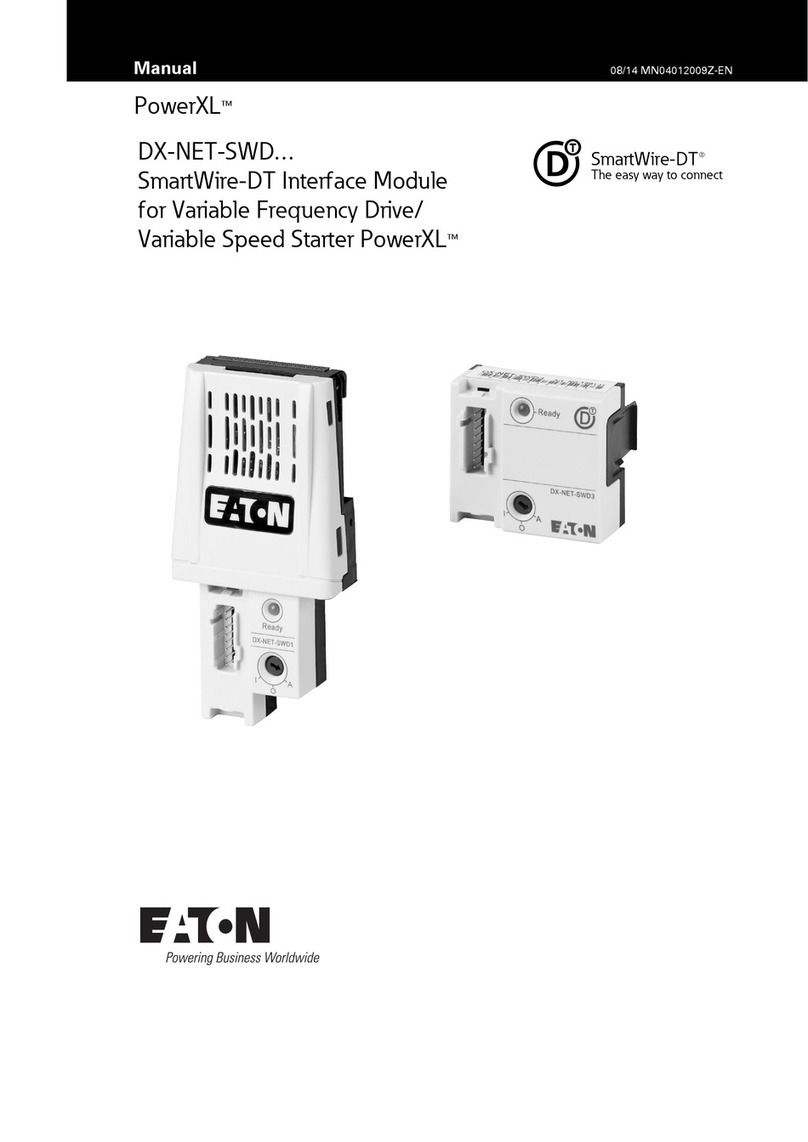
Eaton
Eaton Power XL SmartWire-DT DX-NET-SWD Series manual

Crane
Crane KROMBACH TUFSEAT Performance Series Installation, operation and maintenance manual
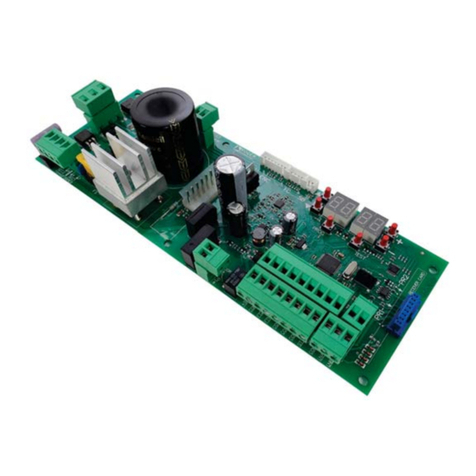
Roger Technology
Roger Technology B70/1DCHP Instructions and warnings for installation
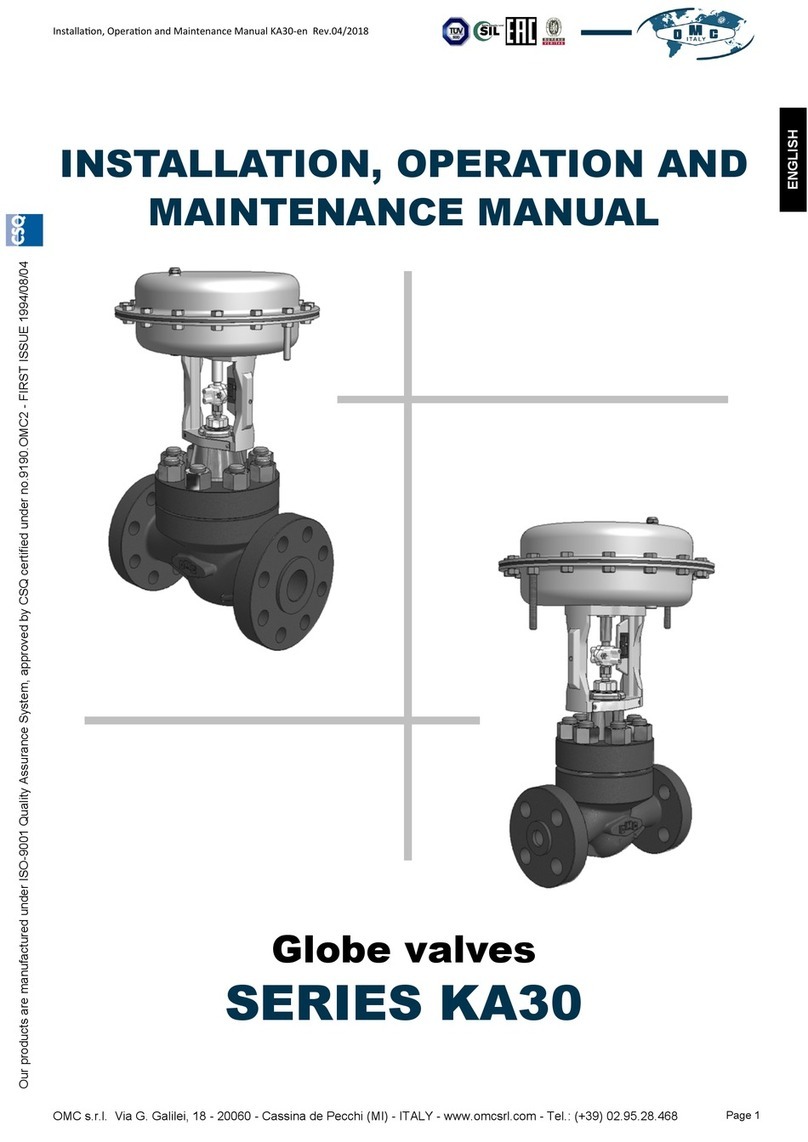
OMC
OMC KA30 Series Installation, operation and maintenance manual

